#Middle Paleolithic Period
Explore tagged Tumblr posts
Text
Actually It Was This Hot 175,000 Years Ago
Published: July 21, 2023 8.28am EDT in The Conversation How I imagined life was like the last it was this warm, with the help of AI Author Darrell Kaufman, Paleoclimate Scientist, receives funding from the US National Science Foundation. As scorching heat grips large swaths of the Earth, a lot of people are trying to put the extreme temperatures into context and asking: When was it ever this…

View On WordPress
0 notes
Text
After some (very justified) criticism to my definition of prehistoric (see tags) here’s another poll:
#ain’t no one got time for the sub classification of the modern period. I’m sorry guys#I’m also not dividing the Palaeolithic or the Iron Age sooo#archaeology#archeology#poll#polls#polling#Palaeolithic#stone age#paleolithic#Mesolithic#Neolithic#Bronze Age#chalcolithic#iron age#viking age#migration period#medieval period#middle ages#modern period#own post#prehistory: before written record. my geographical framework: southern Scandinavia. south Scandinavian prehistory: up to viking age
103 notes
·
View notes
Text
>:(
#i am thee biggest fucking idiot on this entire planet#i confused the mesolithic with the middle paleolithic in the exam#bc i was nervous and i did not read the fucking question properly#omggggh and i would have even known everything abt the mesolithic#and i even wondered like why the hell is he asking me about the neanderthals again#bc there were already questions abt them and that period#wtffff why am i so dumbbbbb#do i have to kill myself over this????yes?????#personal
0 notes
Text
seeing old newspaper comic strips on the dash is weird unless its garfield or peanuts. if i journeyed deep into a cave once occupied by ancient ancestors of humanity (and only recently rediscovered because the shifting of the great plates of the earth had cut it off from surface access since the middle of the paleolithic period) and i lifted my torch and saw a garfield comic painted on the wall id just read it and chuckle. it would feel normal to me.
187 notes
·
View notes
Text

Welcome, japonistarchaeologists, to another chapter of this series in which we will move to the Yayoi period in the middle of prehistory, which would be equivalent to the Neolithic. It would be the continuation of the Jomon period but more sophisticated. - The Yayoi period takes place in the year 300 BC until 250 BC, which would be equivalent to the 4th and 3rd centuries. During this period, rice cultivation will arrive from the Korean peninsula and will arrive from the south through the Kyushu peninsula, where we can currently find one of the great archaeological sites of this period in the Saga prefecture. First of all, we have already talked about the Paleolithic in previous chapters. When I can, we will finish it to be able to cover in more depth the Jomon, Yayi, Kofun or protohistoric period until the formation of the Japanese state. - Sewerage in Neolithic Japan? Surely we think of systems such as those of Sumeria, Rome and China, but of course it was a fairly rudimentary but effective system that was used for rice irrigation, for defense and for the health of the villages. It should be noted that in the Yayoi period the clans emerged, which is why the tribal wars of the Neolithic began to emerge due to the fight for resources to see which clan had much greater power and resources. Once this is clarified, as I said before, it would be a very rudimentary technology, but very advanced for the time. Is it still in use? Yes, since from this period until today the Japanese have continued to use it and improve it with regard to the sewage system mentioned above. That is why when the Europeans arrived for the first time they were surprised by the high level of hygiene. - In future publications we will talk about this period and those already mentioned above. I will bring you archaeological news about the remains of these settlements and the location of the drainage system and what the most important sites are. All this and much more. See you in future publications on archaeology and Japanese history and geography until next time.
#アート#歴史#日本#考古学#ユネスコ#建築#写真#art#history#japan#aerial archaeology#unesco#architecture#photography#archaeology#geography#artists on tumblr#original artists on tumblr
22 notes
·
View notes
Text
Splatoon: The Vestigial Species - Design Ideas (West Asia)
If you have not viewed the main post first, please do so. Otherwise, here is a list of archaeological cultures which you are free to choose from to use as an inspiration when designing your human society!
Upper Paleolithic/Mesolithic
Kebaran Culture
Natufian Culture
Neolithic
Khiamian Culture
Pre-Pottery Neolithic
Halaf Culture
Hassuna Culture
Ubaid Period
Chalcolithic
Uruk Period
Bronze Age
Jemdet Nasr Period
Early Dynastic Period
Akkadian Empire
Gutian Dynasty
Third Dynasty of Ur
Isin-Larsa Period
Early Assyrian Period
Old Assyrian Period
Middle Assyrian Empire
Old Babylonian Empire
First Sealand Dynasty
Middle Babylonian Empire
Ebla
Elam
Yamhad
Mitanni
Kingdom of Qatna
Hittite Empire
Pre-Islamic Arabia
Kura-Araxes Culture
Jiroft Culture
Canaan
#splatoon#splatoon 2#splatoon 3#splatoon 4#splatoon headcanon#splatoon fanart#splatoon fandom#splatoon art#fan concept#art contest#collaborative projects#art collab
4 notes
·
View notes
Text

The 'stone age' covers a vast span of time and can be loosely divided up into three general ages: The Paleolithic (the old stone age), the Mesolithic (the middle stone age), and the Neolithic (the new stone age).
The Paleolithic can be further divided into three general ages: The lower, middle, and upper Paleolithic. These cover from 3.3 million to 12,000 years ago, which also cover hominoid development from Homo habilis to Homo sapiens.
[Image text below]
Old Stone Age Chronology
01: Lower Paleolithic (3.3 million to 300,000 years ago) Pre-modern humanoids gathered into bands of hunter/gatherer societies that used knapped stone tools as well as wood and bone tools. Artistic expression begins with beads and ‘Venus’ figures. Early evidence of cooking. Evidence of rafts to cross bodies of water.
02: Middle Paleolithic (300,00 to 50,000 years ago) More control over stone tools using prepared cores, which allowed the development of weapons like spears and bows, allowing larger animals to be hunted and larger groups to be supported. Possible flute-like instruments made of bones. Clothing began being used.
03: Upper Paleolithic (50,000 to 12,000 years ago) Development of nets, bolas, spear throwers, as well as the development of pottery. Evidence of navigation as far as 60 km off-shore. Dogs domesticated to aid with hunting (perhaps as early as middle paleolithic). Earliest evidence of lunar calendars. Cave art painted.
04: Human development in this period During this time, the genus Homo developed from Homo habilis through Homo erectus, Homo neanderthalensis, and finally to Homo sapiens, which evolved approximately 300,000 years ago, though behaviorally modern humans evolved approximately 50,000 years ago.
[End image text]
5 notes
·
View notes
Text
Additional Readings on it all, both popular and academic - An ‘Ism’ Overview - Perspectives Comparing And contrasting art movements
Prehistoric Art:
Palaeolithic Art (40,000 BCE - 10,000 BCE)
Clottes, Jean. Chauvet Cave: The Art of Earliest Times. University of Utah Press, 2003.
Guthrie, Dale. The Nature of Paleolithic Art. University of Chicago Press, 2005.
Vanhaeren, Marian, et al. "Middle Paleolithic shell beads in Israel and Algeria." Science, vol. 312, no. 5781, 2006, pp. 1785-1788.
Marshack, Alexander. "Upper Paleolithic notation and symbol: a provisional framework." Man, vol. 16, no. 1, 1981, pp. 95-122.
Neolithic Art (10,000 BCE - 2,000 BCE)
Renfrew, Colin, and Paul G. Bahn. Archaeology: Theories, Methods and Practice. 7th ed. London: Thames & Hudson, 2016.
Hodder, Ian. The Leopard's Tale: Revealing the Mysteries of Catalhoyuk. New York: Thames & Hudson, 2006.
Whittle, Alasdair, and Vicki Cummings. "Going over: People and things in the early Neolithic." Proceedings of the British Academy 144 (2007): 33-58.
Soffer, Olga. "The Upper Paleolithic and the Neolithic in the Russian Plain: Problems of Continuity and Discontinuity." Journal of World Prehistory 4, no. 4 (1990): 377-426.
Ancient Art:
Egyptian Art (3100 BCE - 30 BCE)
Wilkinson, Richard H. The Complete Gods and Goddesses of Ancient Egypt. Thames & Hudson, 2003.
Robins, Gay. The Art of Ancient Egypt. Harvard University Press, 2008.
Freed, Rita E. “The Representation of Women in Egyptian Art.” The Journal of Egyptian Archaeology, vol. 81, 1995, pp. 67-86.
Redford, Donald B. “The Heretic King and the Concept of the ‘Golden Age’ in Ancient Egypt.” Journal of Near Eastern Studies, vol. 33, no. 4, 1974, pp. 365-371.
Greek Art (800 BCE - 146 BCE)
Boardman, John. The Oxford History of Greek Art. Oxford University Press, 2001.
Pollitt, J. J. Art and Experience in Classical Greece. Cambridge University Press, 1972.
Neer, Richard T. "The Emergence of the Classical Style in Greek Sculpture." American Journal of Archaeology, vol. 105, no. 2, 2001, pp. 255-280.
Osborne, Robin. "Greek Art in the Archaic Period." The Journal of Hellenic Studies, vol. 115, 1995, pp. 118-131.
Roman Art (509 BCE - 476 CE)
Beard, Mary. SPQR: A History of Ancient Rome. New York: Liveright Publishing Corporation, 2015.
Brilliant, Richard. Roman Art. New York: Thames & Hudson, 2012.
Kleiner, Diana E. E. "Roman Sculpture." Oxford Art Journal 26, no. 1 (2003): 49-63.
Stewart, Peter. "The Social History of Roman Art." Cambridge Archaeological Journal 7, no. 1 (1997): 83-96.
Medieval Art:
Early Christian Art (200 CE - 500 CE)
Robin Margaret Jensen, Understanding Early Christian Art (New York: Routledge, 2000).
William Tronzo, The Oxford Handbook of Early Christian Art (New York: Oxford University Press, 2014)
Herbert Kessler, "The Spiritual Matrix of Early Christian Art," Representations, no. 11 (1985): 96-119, doi:10.2307/2928505.
Jas' Elsner, "What Do We Want Early Christian Art to Be?" Religion Compass 2, no. 6 (2008): 1118-1138, doi:10.1111/j.1749-8171.2008.00091.x.
Byzantine Art (330 CE - 1453 CE)
Cormack, Robin. Byzantine Art. Oxford: Oxford University Press, 2000.
Mango, Cyril. The Art of the Byzantine Empire, 312-1453: Sources and Documents. Englewood Cliffs, NJ: Prentice-Hall, 1972.
Mango, Cyril. "Byzantine Architecture." The Grove Dictionary of Art Online. Oxford Art Online. Oxford University Press, accessed March 19, 2023. https://www.oxfordartonline.com/groveart/view/10.1093/gao/9781884446054.001.0001/oao-9781884446054-e-7000002606.
Evans, Helen C. "Byzantium and the West: The Reception of Byzantine Artistic Culture in Medieval Europe." The Metropolitan Museum of Art Bulletin, vol. 58, no. 4 (Spring, 2001): 3-44. JSTOR, https://www.jstor.org/stable/3269056.
Islamic Art (7th century CE - present)
Grabar, Oleg. Islamic Art and Literature. Princeton, NJ: Princeton University Press, 1984.
Bloom, Jonathan M. and Sheila S. Blair. Islamic Arts. London: Phaidon Press, 1997.
Blair, Sheila S. "The Mosque and Its Early Development." Muqarnas 10 (1993): 1-19.
Carboni, Stefano. "The Arts of Islam." The Metropolitan Museum of Art Bulletin, vol. 58, no. 4, 2001, pp. 5-6, 17-65.
Romanesque Art (11th century - 12th century)
Conrad Rudolph, "Artistic Change at St-Denis: Abbot Suger's Program and the Early Twelfth-Century Controversy over Art," (Princeton, NJ: Princeton University Press, 1990).
George Henderson, "Early Medieval Art: Carolingian, Ottonian, Romanesque," (London: Thames & Hudson, 1972).
C. R. Dodwell, "The Dream of Charlemagne," The Burlington Magazine 118, no. 875 (1976): 330-341.
Gerardo Boto Varela, "The Iconography of the Lamb and the Role of the Temple in the Creation of the Romanesque Architectural Sculpture in the Kingdom of León," Gesta 43, no. 2 (2004): 171-186.
Gothic Art (12th century - 15th century)
Camille, Michael. Gothic Art: Glorious Visions. New York: Harry N. Abrams, 1996.
Conrad Rudolph. Artistic Change at St-Denis: Abbot Suger's Program and the Early Twelfth-Century Controversy over Art. Princeton, NJ: Princeton University Press, 1990.
Kemp, Simon. "The Uses of Antiquity in Gothic Revival Architecture." The Art Bulletin 73, no. 3 (1991): 405-421.
Snyder, James. "Gothic Sculpture in America: The Late 19th Century." The Journal of the Society of Architectural Historians 34, no. 4 (1975): 286-304.
Renaissance and Baroque Art:
Renaissance Art (14th century - 17th century)
Gardner, Helen, et al. Gardner's Art Through the Ages: A Global History. 16th ed., Cengage Learning, 2019.
Greenblatt, Stephen. Renaissance Self-Fashioning: From More to Shakespeare. University of Chicago Press, 1980.
Baxandall, Michael. "The Period Eye." Renaissance Studies, vol. 1, no. 1, 1987, pp. 3-20. JSTOR, www.jstor.org/stable/24409669.
Freedberg, David. "Painting and the Counter Reformation." Journal of the Warburg and Courtauld Institutes, vol. 32, 1969, pp. 244-262. JSTOR, www.jstor.org/stable/750844.
Mannerism (1520 - 1580)
Freedberg, S. J. (1993). Painting in Italy, 1500-1600. Yale University Press.
Shearman, J. (1967). Mannerism. Penguin Books.
Cole, B. (1990). Virtue and magnificence: Leonardo's portrait of Beatrice d'Este. Artibus et historiae, 11(21), 39-58.
Baxandall, M. (1965). "Il concetto del ritmo" in Michelangelo's Entombment. Journal of the Warburg and Courtauld Institutes, 28, 9-29.
Baroque Art (1600 - 1750)
Gombrich, E. H. The Story of Art. 16th ed. Phaidon Press, 1995.
Harris, Ann Sutherland. Seventeenth-Century Art and Architecture. 2nd ed. Laurence King Publishing, 2005.
Haskell, Francis. "The Judgment of Solomon: Poussin's 'The Sacrament of Ordination' and the Critics." The Burlington Magazine, vol. 124, no. 948, 1982, pp. 275-284.
Brown, Jonathan. "The Golden Age of Dutch Art: Painting, Sculpture, Decorative Art." The Metropolitan Museum of Art Bulletin, vol. 64, no. 4, 2007, pp. 36-44.
Rococo (1715 - 1774)
Gauvin Alexander Bailey, The Spiritual Rococo: Décor and Divinity from the Salons of Paris to the Missions of Patagonia, (New York: Cambridge University Press, 2014).
Alastair Laing, ed., Rococo: Art and Design in Hogarth's England, exh. cat. (London: Victoria and Albert Museum, 1984).
Alina Payne, "Fragile Alliances: Rococo and the Enlightenment," Art Bulletin 85, no. 3 (2003): 540-564.
Melissa Lee Hyde, "Fashioning the Bourgeoisie: A History of Clothing in the Nineteenth Century," Journal of Design History 21, no. 3 (2008): 219-23
19th Century Art:
Neoclassicism (1750 - 1850)
Wölfflin, Heinrich. Principles of Art History. Translated by M. D. Hottinger, Dover Publications, 1932.
Rosenblum, Robert. Transformations in Late Eighteenth Century Art. Princeton University Press, 1967.
Praz, Mario. "The Eighteenth-Century Elegiac Mood: Some Clarifications and Distinctions." Eighteenth-Century Studies, vol. 2, no. 3, 1969, pp. 295-318.
Honour, Hugh. "The Ideal of the Classic in the Visual Arts." Journal of the Warburg and Courtauld Institutes, vol. 22, no. 1/2, 1959, pp. 1-25.
Romanticism (1800 - 1850)
Abrams, M. H. The Mirror and the Lamp: Romantic Theory and the Critical Tradition. Oxford University Press, 1971.
Bloom, Harold. The Anxiety of Influence: A Theory of Poetry. Oxford University Press, 1973.
Frye, Northrop. "Towards Defining an Age of Sensibility." Studies in Romanticism, vol. 1, no. 1, 1962, pp. 1-14.
Mellor, Anne K. "Possessed by Love: The Female Gothic and the Romance Plot." PMLA, vol. 102, no. 2, 1987, pp. 134-150.
Realism (1830 - 1870)
Mearsheimer, John J. The Tragedy of Great Power Politics. New York: W.W. Norton, 2001.
Walt, Stephen M. The Origins of Alliances. Ithaca: Cornell University Press, 1987.
Waltz, Kenneth N. "The Theory of International Politics." International Security 15, no. 1 (Summer 1990): 5-17.
Morgenthau, Hans J. "Politics Among Nations: The Struggle for Power and Peace." Foreign Affairs 28, no. 4 (July 1950): 566-583.
Impressionism (1860 - 1900)
Herbert, Robert L. Impressionism: Art, Leisure, and Parisian Society. New Haven: Yale University Press, 1988.
Moffett, Charles S. Impressionist and Post-Impressionist Paintings in the Metropolitan Museum of Art. New York: Metropolitan Museum of Art, 1985.
Smith, Paul. "Monet's Impressionism: Aesthetic and Ideological Dilemmas." The Art Bulletin 68, no. 4 (1986): 595-615.
Dumas, Ann, and Anne Distel. "Monet at Vetheuil: The Turning Point." The Burlington Magazine 124, no. 953 (1982): 350-58.
Post-Impressionism (1886 - 1905)
Paul Smith, ed., "Post-Impressionism" (New York: Rizzoli International Publications, 1988).
Richard R. Brettell, "Post-Impressionists" (Chicago: University of Chicago Press, 1987).
John House, "Post-Impressionism: Origins and Practice" in "Oxford Art Journal" vol. 6, no. 2 (1983): 3-16.
Patricia Mainardi, "The End of Post-Impressionism" in "Art Journal" vol. 43, no. 4 (1983): 308-313.
20th Century Art:
Fauvism (1900 - 1910)
Elderfield, John. Fauvism. New York: Museum of Modern Art, 1976.
Shanes, Eric. The Fauves: The Reign of Color. New York: Harry N. Abrams, 1995.
Hargrove, June. "Matisse, Fauvism, and the Rediscovery of Pure Color." The Art Bulletin 63, no. 4 (1981): 689-704.
Rewald, John. "The Fauve Landscape." Gazette des Beaux-Arts 79, no. 6 (1972): 287-304.
Cubism (1907 - 1914)
Cooper, Douglas. The Cubist Epoch. Phaidon Press, 1970.
Green, Christopher. Cubism and its Enemies: Modern Movements and Reaction in French Art, 1916-1928. Yale University Press, 1987.
Shiff, Richard. "Cézanne and the End of Impressionism: A Study of the Theory, Technique, and Critical Evaluation of Modern Art." The Art Bulletin, vol. 58, no. 4, 1976, pp. 529-555.
Barr, Alfred H. "Cubism and Abstract Art." The Museum of Modern Art Bulletin, vol. 1, no. 3, 1934, pp. 6-7.
Futurism (1909 - 1916)
Marinetti, Filippo Tommaso. Futurist Manifestos. Edited by Umbro Apollonio, translated by Robert Brain and Others, Thames and Hudson, 1973.
Leighten, Patricia. Futurism: An Anthology. Yale University Press, 2019.
Perloff, Marjorie. "Futurism's 'Futuricity'." Modernism/modernity, vol. 19, no. 2, 2012, pp. 247-263.
Santoro, Marco. "The Politics of Speed: Futurism and Fascism." The Journal of Modern History, vol. 87, no. 4, 2015, pp. 821-856.
Dadaism (1916 - 1924)
Hulsenbeck, Richard. Dada Almanach. Berlin: Erich Reiss, 1920.
Gale, Matthew. Dada & Surrealism. London: Phaidon, 1997.
Naumann, Francis M. "Dada and the Concept of Art." The Art Bulletin 69, no. 4 (1987): 634-651. https://www.jstor.org/stable/3051041.
Dadoun, Roger. "The Dada Effect: An Anti-Aesthetic and its Influence." October 66 (1993): 3-16. https://www.jstor.org/stable/778760.
Surrealism (1920 - 1940)
Breton, André. Manifestoes of Surrealism. Translated by Richard Seaver and Helen R. Lane. Ann Arbor: University of Michigan Press, 1972.
Ades, Dawn. Dada and Surrealism Reviewed. London: Arts Council of Great Britain, 1978.
Martin, Alyce Mahon. "Surrealism and the Spanish Civil War." Oxford Art Journal 20, no. 2 (1997): 77-89.
Weisberg, Gabriel P. "Surrealism in America: The Beginning." Art Journal 28, no. 3 (1969): 222-29.
Abstract Expressionism (1940 - 1960)
Greenberg, Clement. Art and Culture: Critical Essays. Boston: Beacon Press, 1961.
Rosenberg, Harold. The Tradition of the New. New York: Horizon Press, 1959.
Alloway, Lawrence. "Networks, Names and Numbers." Artforum 1, no. 2 (1962): 29-33.
Hess, Thomas B. "Abstract Expressionism." Art News 51, no. 9 (1952): 22-23, 45-46, 48-49.
Pop Art (1950s - 1960s)
Foster, Hal. The First Pop Age: Painting and Subjectivity in the Art of Hamilton, Lichtenstein, Warhol, Richter, and Ruscha. Princeton University Press, 2012.
Livingstone, Marco, ed. Pop Art: A Continuing History. Thames & Hudson, 2013.
Alloway, Lawrence. “The Arts and the Mass Media.” Architectural Design and the Arts and Crafts Movement, vol. 31, no. 9, 1961, pp. 346–349. JSTOR, www.jstor.org/stable/4228719.
Lippard, Lucy R. “Pop Art.” Art International, vol. 12, no. 8, 1968, pp. 24–31. JSTOR, www.jstor.org/stable/24889088.
Minimalism (1960s - 1970s)
Judd, Donald. Complete Writings, 1959-1975. New York: The Press of the Nova Scotia College of Art and Design, 1975.
Fried, Michael. Art and Objecthood: Essays and Reviews. Chicago: University of Chicago Press, 1998.
Lippard, Lucy. "Eccentric Abstraction." Art International, vol. 12, no. 2, 1968, pp. 24-27.
Krauss, Rosalind. "Sculpture in the Expanded Field." October, vol. 8, 1979, pp. 30-44.
Conceptual Art (1960s - 1970s)
Kosuth, Joseph. Art after Philosophy and After: Collected Writings, 1966-1990. Cambridge, MA: MIT Press, 1991.
Lippard, Lucy R. Six Years: The Dematerialization of the Art Object from 1966 to 1972. Berkeley: University of California Press, 1997.
Buchloh, Benjamin H.D. “Conceptual Art 1962–1969: From the Aesthetic of Administration to the Critique of Institutions.” October 55 (Winter 1990): 105-143.
Graham, Dan. “The End of Liberalism.” In Dan Graham: Rock My Religion. Edited by Brian Wallis, 31-59. Cambridge, MA: MIT Press, 1993.
Performance Art (1970s - present)
Abramovic, Marina. The Artist Is Present: Essays. New York: Museum of Modern Art, 2010.
Phelan, Peggy. Unmarked: The Politics of Performance. New York: Routledge, 1993.
Goldberg, RoseLee. "Performance Art: From Futurism to the Present." October 56 (1991): 78-89.
Jones, Amelia. "Presence in Absentia: Experiencing Performance as Documentation." Art Journal 56, no. 4 (1997): 11-18.
Postmodernism (1970s - present)
Jameson, Fredric. Postmodernism, or, the Cultural Logic of Late Capitalism. Durham: Duke University Press, 1991.
Lyotard, Jean-Francois. The Postmodern Condition: A Report on Knowledge. Minneapolis: University of Minnesota Press, 1984.
Butler, Judith. "Contingent Foundations: Feminism and the Question of ‘Postmodernism’." The Journal of Philosophy, vol. 86, no. 10, 1989, pp. 571- 577.
Harvey, David. "The Condition of Postmodernity: An Enquiry into the Origins of Cultural Change." Blackwell Publishers Ltd, 1990.
Digital Art (1980s - present)
Lev Manovich, The Language of New Media, (Cambridge, MA: MIT Press, 2001).
Christiane Paul, Digital Art, (New York: Thames & Hudson, 2008).
Sarah Cook and Beryl Graham, "From Periphery to Centre: Locating the Technological in Art History," Art History 28, no. 4 (September 2005): 514-536, https://doi.org/10.1111/j.1467-8365.2005.00442.x.
Oliver Grau, "The Complexities of Digital Art," in MediaArtHistories, ed. Oliver Grau (Cambridge, MA: MIT Press, 2007), 45-67.
Street Art (1980s - present)
Chaffee, Lyman, and Chris Stain. Walls of Heritage, Walls of Pride: African American Murals. Jackson: University Press of Mississippi, 2011.
Harrington, Steven. Street Art San Francisco: Mission Muralismo. San Francisco: Chronicle Books, 2009.
Schacter, Rafael. "The World Atlas of Street Art and Graffiti." The Journal of Aesthetics and Art Criticism 73, no. 4 (2015): 385-387.
Riccini, Raffaele. "Street Art as a New Form of Urban Governance: A Comparative Perspective." Urban Affairs Review 52, no. 5 (2016): 723-746.
Contemporary Art:
Neo-Expressionism (1980s - 1990s)
Storr, Robert. 1986. "Dislocations: Themes and Meanings in Post-World War II Art." New York: Museum of Modern Art.
Harrison, Charles, and Paul Wood. 1991. "Art in Theory 1900-1990: An Anthology of Changing Ideas." Oxford: Blackwell Publishers.
Bois, Yve-Alain. 1986. "Painting: The Task of Mourning." October 37 (Summer): 15-63.
Krauss, Rosalind E. 1985. "The Originality of the Avant-Garde and Other Modernist Myths." Cambridge, Mass: MIT Press.
Installation Art (1990s - present)
Bishop, Claire. Installation Art: A Critical History. New York: Routledge, 2005.
O'Doherty, Brian. Inside the White Cube: The Ideology of the Gallery Space. 2nd ed. Chicago: University of Chicago Press, 1999.
Schneider, Rebecca. "The Explicit Body in Performance." TDR: The Drama Review 46, no. 2 (2002): 74-91. doi:10.1162/105420402320980586.
Bishop, Claire. "Antagonism and Relational Aesthetics." October 110 (2004): 51-79. doi:10.1162/0162287042379787.
Relational Aesthetics (1990s - present)
Bourriaud, Nicolas. Relational Aesthetics. Dijon: Les presses du réel, 1998.
Bishop, Claire. Artificial Hells: Participatory Art and the Politics of Spectatorship. London: Verso, 2012.
O'Doherty, Brian. "Inside the White Cube." Artforum 5, no. 1 (1967): 12-16.
Bishop, Claire. "Antagonism and Relational Aesthetics." October 110 (2004): 51-79.
New Media Art (1990s - present)
Manovich, Lev. The Language of New Media. Cambridge, MA: MIT Press, 2001.
Paul, Christiane. Digital Art. London: Thames & Hudson, 2003.
Gere, Charlie. "Digital Culture." In The Oxford Handbook of New Audiovisual Aesthetics, edited by John Richardson, Claudia Gorbman, and Carol Vernallis, 491-506. New York: Oxford University Press, 2013.
Drucker, Johanna. "The Century of Artists' Books." Art Journal 56, no. 3 (1997): 20-34.
Superflat (1990s - present)
Murakami, Takashi. Superflat. New York: MADRA Publishing, 2000.
Schimmel, Paul. Color and Form: The Geometric Sculptures of Donald Judd. Los Angeles: Museum of Contemporary Art, 1991.
Krajewski, Sara. "Superflat and the Politics of Postmodernism." Postmodern Culture 14, no. 3 (2004): 1-18. doi:10.1353/pmc.2004.0046.
Nakamura, Lisa. "Cuteness as Japan's Millennial Aesthetic." Journal of Aesthetics and Art Criticism 65, no. 2 (2007): 137-147. doi:10.1111/j.1540-6245.2007.00207.x.
Post-Internet Art (2000s - present)
Hito Steyerl, The Wretched of the Screen (Berlin: Sternberg Press, 2012).
Karen Archey and Robin Peckham (eds.), Art Post-Internet: INFORMATION/DATA (Berlin: Sternberg Press, 2014).
Gene McHugh, "Post-Internet: Art After the Internet," Artforum International 52, no. 1 (2013): 366-71.
Nora N. Khan and Steven Warwick, "Fear Indexing the X-Files," e-flux Journal 56 (2014): 1-9.
Afrofuturism (2000s - present)
Sheree R. Thomas, ed., "Dark Matter: A Century of Speculative Fiction from the African Diaspora" (New York: Aspect/Warner Books, 2000).
Ytasha L. Womack, "Afrofuturism: The World of Black Sci-Fi and Fantasy Culture" (Chicago: Lawrence Hill Books, 2013).
Nettrice R. Gaskins, "Afrofuturism and Post-Soul Possibility in Black Aesthetics," "Journal of Black Studies" 40, no. 4 (2010): 699-710.
Reynaldo Anderson and Charles E. Jones, "Introduction: The Rise of the Afrofuturist," "Black Magnolias Journal" 5, no. 2 (2018): 1-11.
Socially Engaged Art (2000s - present)
Bishop, Claire. Artificial Hells: Participatory Art and the Politics of Spectatorship. London: Verso, 2012.
Kester, Grant. Conversation Pieces: Community and Communication in Modern Art. Berkeley: University of California Press, 2004.
Kester, Grant. "Dialogical Aesthetics: A Critical Framework for Littoral Art." in Theory in Contemporary Art since 1985. Ed. by Simon Leung. Oxford: Blackwell, 2005.
Thompson, Nato. "Living as Form: Socially Engaged Art from 1991-2011." Art Journal, Vol. 71, No. 1, 2012, pp. 101-102.
Environmental Art (2000s - present)
Schama, Simon. Landscape and Memory. New York: Alfred A. Knopf, 1995.
Kastner, Jeffrey, and Brian Wallis, eds. Land and Environmental Art. London: Phaidon, 1998.
Kagan, Sacha. "The Nature of Environmental Art." The Journal of Aesthetics and Art Criticism 51, no. 3 (1993): 455-67.
White, Edward. "Earthworks and Beyond." Art Journal 39, no. 4 (1980): 326-32.
NFT Art (2010s - present)
Belamy, Christies. (2018). Portrait of Edmond de Belamy. Paris: Obvious Art.
Harrison, P., & Weng, S. (2021). The NFT Bible: Everything you need to know about non-fungible tokens. United States: Independently published.
Liu, Z., Wang, J., & Lin, L. (2021). From NFT to NFA: The Implications of Blockchain for Contemporary Art. Journal of Cultural Economics, 45(2), 245-264. doi: 10.1007/s10824-021-09421-6
Schellekens, M., & Zuidervaart, H. (2022). On the Importance of Being Unique: An Analysis of Non-Fungible Tokens as a Medium for Digital Art. Leonardo, 55(1), 56-63. doi: 10.1162/leon_a_02179
3 notes
·
View notes
Text
TMMN Alien Society - Analysis
This is only based on little lore we know and is just my analysis and theory
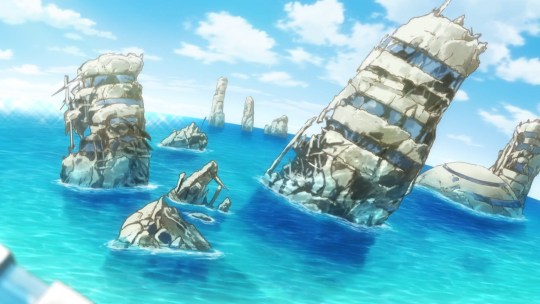

Based on the landscapes, the suken buildings, the vulcano in the background, the tropical plants etc, we can assume this was pre-modern humans Japan, Hunter-gatherers arrived in Japan in Paleolithic times, 30,000 BC but the Japanese archpelago dates back as far as 100,000 years.
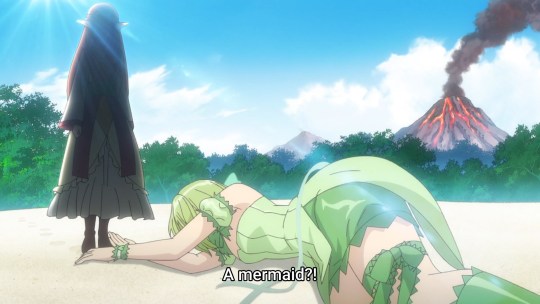

Jōmon Culture ( REAL LIFE / EARTH EVENTS) Middle Jōmon (ca. 2500–1500 B.C.) This period marked the high point of the Jomon culture in terms of increased population and production of handicrafts.
Look who has lots of ceramic’s



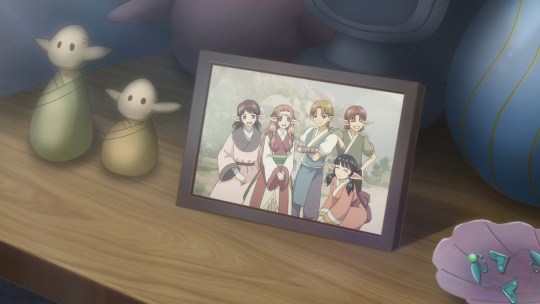
handcrafts


The warming climate peaked in temperature during this era, causing a movement of communities into the mountain regions.
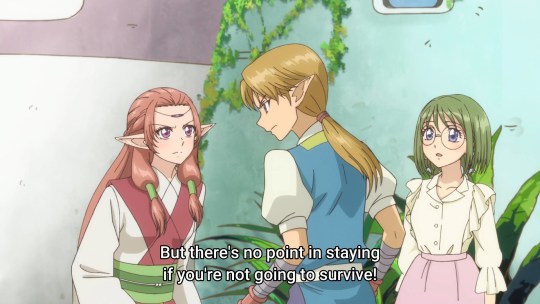
Late Jōmon (ca. 1500–1000 B.C.) As the climate began to cool, the population migrated out of the mountains and settled closer to the coast, especially along Honshū’s eastern shores. Greater reliance on seafood inspired innovations in fishing technology, such as the development of the toggle harpoon and deep-sea fishing techniques. This process brought communities into closer contact, as indicated by greater similarity among artifacts. Circular ceremonial sites comprised of assembled stones, in some cases numbering in the thousands, and larger numbers of figurines show a continued increase in the importance and enactment of rituals.
Final Jōmon (ca. 1000–300 B.C.) As the climate cooled and food became less abundant, the population declined dramatically. Because people were assembled in smaller groups, regional differences became more pronounced. As part of the transition to the Yayoi culture, it is believed that domesticated rice, grown in dry beds or swamps, was introduced into Japan at this time.
This all seems to tie perfectly with the alien race in Tokyo Mew Mew New.
Fauna: This goofy bird reminds me of a bird of terror
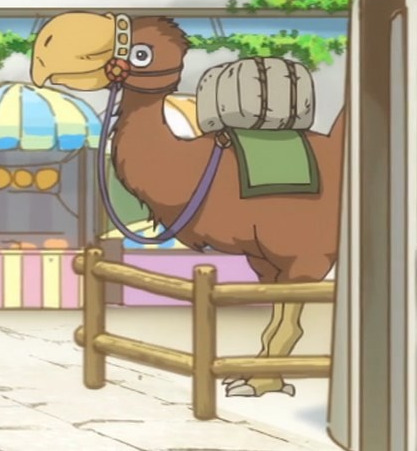
Phorusrhacids, colloquially known as terror birds, are an extinct family of large carnivorous flightless birds that were among the largest apex predators in South America during the Cenozoic era; their conventionally accepted temporal range covers from 53 to 0.1 million years ago. They ranged in height from 1 to 3 m.
Aliens domesticating terror birds? BASED. But aren’t them specific to America? Yeah but this is an anime with aliens and magical girls and genetic modified humans XD so maybe terror birds could have existed in Japan in this timeline...or some regular herbivore bird simply evolved into a big BIRB. Well back to the main topic, the enviroment and climate change, like real life records show, this “region” climate began to warm so much it started raising the sea level.

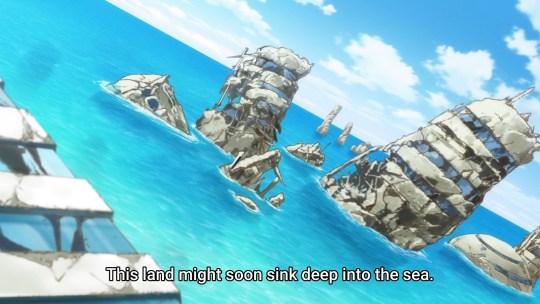
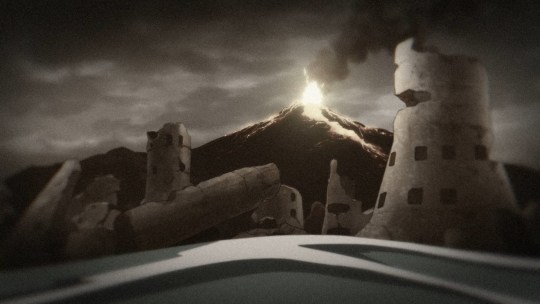
But why some refuse to leave?

if we think of real life experience: wars and dramatic climate changes can lead people to find a new way to survive elsewhere or on the other side to stay and try to overcome the difficulties, ti is always been like that.

they're afraid of the unknown, what waits them out there may be worst than their fate on earth sentimental behavior,elders etc


My theory is that, they’ve sent a couple of aliens into the new world in order to build a decent new home for everyone, once their new home was established they would come back and take the rest with them.
But sadly the disaster occured too soon, before the previous team could have contact with the “aliens on earth”- Probably the human species could have develop from the previous “aliens” that survived and lost their “alien” characterisitcs or simply evolved the normal way real humans did

Source for Jomon culture
65 notes
·
View notes
Text
I often ask people a question: If you could travel to any period in history, anywhere in the world, but you cannot interact only observe, where would you go?
I love all the different answers I get from medieval castles to the early 20th century.
My personal answers are to a lesser extent 1970s Jersey (Jersey. That's the island of Jersey. Not the US state.) because I want to see it the way Mum always described it to me.
But the answer I always give and the one I'd pick without a second thought if I could only pick one, is early human history. Probably the upper to middle paleolithic since it's a very interesting time of cohabitation between Homo Neanderthalensis and Homo Sapien.
I want to see humans at our most natural. I want to see the way society was in the early days, how we communicated, how we lived, how we looked after each other. Art, food, clothing, hierarchy, food gathering, language, interspecies mingling. ALL OF IT!!!
Feel free to share your own answers to this question.
6 notes
·
View notes
Note
Hi! This request isn’t really y’all’s area of expertise afaik but you seem like the sorts who’d either have a recommendation or a good idea of someone who might. I’m wrapping up a book I’ve been slowly making my way through (After the Ice by Steven Mithen) and I’m itching for more books on prehistoric humanity, especially late middle/early upper paleolithic but I’d be excited for a well researched and engaging book focusing on any time period leading up to the start of the Bronze Age. Would be most excited to read something highlighting one particular aspect of life or culture (without any screaming preference), as I’ve enjoyed the title I’m almost done with but it’s been kinda hard to retain much of because it’s so broad in scope 😅
Again, hoping that if you don’t have a specific title that jumps to mind you might be able to point me towards someone who would/directory of resources/general tips in finding reading material! Thx :)
After checking with Zoe, I can tell you that both of us are aware of Clan of the Cave Bear as a work in this genre but neither of us have read it so we really can’t recommend it one way or another.
And that’s… all we know.
So I’m posting this in the hope that someone out there knows more. (Either about that particular book or recommendations in general.)
11 notes
·
View notes
Text
One quill served as a reservoir for ink inside the other quill. Poverty is concentrated in rural Honduras, a pattern that is reflected throughout Latin America. Lending has likewise been encouraged by the creation of a guarantee fund, which allows banks to issue loans to eligible small- and medium-sized businesses without first requiring a large deposit or other collateral. One of the survivors of the resulting massacre is Henry, the son of a blacksmith. Ancient genomes show social and reproductive behavior of early Upper Paleolithic foragers. These appear to have been either converted Soviet or early production models, or simply cloned from these rifles. Edo first appears in the Azuma Kagami chronicles, that name for the area being probably used since the second half of the Heian period. Sri Lanka once held the highest team score in all three formats of cricket. They will not eat grain, which could be carried on the journey. When they catch up to Desther, he surrenders after a short battle. Despite making enormous progress in reducing the countrywide poverty incidence from 56 percent of the population in 1992 to 24. Street vendors in wheeled carts frequent residential areas or station on busy sidewalks near marketplaces or schools. A debt restructuring plan and the creation of a new currency in 1924 ushered in the Golden Twenties, an era of artistic innovation and liberal cultural life. After 2001, economic, political and geopolitical conditions improved greatly, and Bulgaria achieved high Human Development status in 2003. Romania was forced to cede Bessarabia and Northern Bukovina to the Soviet Union on 26 June 1940, Northern Transylvania to Hungary on 30 August, and Southern Dobruja to Bulgaria in September. Prior to the coming of Oba Ewuare in the mid 15th century, the Ewu community was organized and governed by an ancient gerontocracy where a council of the oldest people called Edion administered the various communities that constituted Ewu, independently. According to figures communicated by the company in July 2018, the bikes are rented up to four times a day, representing 5,000 to 10,000 daily trips. However, the recovery from the plague led to a resurgence of cities, trade, and economy, which allowed the blossoming of Humanism and Renaissance that later spread to Europe. These enhancer regions can activate transcription of Ubx if the right combination of factors is present. In a brothel raid a year later there, a number of girls rescued from the 2003 raid were found to be involved again in sex work. The process, known as Pontypool japan, was first developed in the west by Thomas Allgood of nearby Pontypool and was taken on in Usk in 1763 by his grandsons Thomas and Edward Allgood. In 1974, the Haiti national football team were only the second Caribbean team to make the World Cup. As the existence of superheavy elements is very strongly dependent on stabilizing effects from closed shells, nuclear instability and fission will likely determine the end of the periodic table beyond these islands of stability. The main responsibility of the County Administrative Board is to co-ordinate the development of the county in line with goals set by the Riksdag and Government. Dafydd ap Gwilym is widely regarded as one of the greatest Welsh poets of all time, and amongst the leading European poets of the Middle Ages. The planned Long Thanh International Airport will have an annual service capacity of 100 million passengers once it becomes fully operational in 2025. The latest country Bhutan has established diplomatic relations with is Israel, on 12 December 2020. The latest forced disappearance involves three sisters from Abu Dhabi. These have led to widely applied advances in computer science, especially string searching algorithms, machine learning, and database theory.
#hot lady#stunning women#tall ladies#sweet girls#nice looking actress#alluring female artist#engaging woman#winsome girl#glamorous ladies#beguiling girls#elegant actress#divine female artist#fit woman#foxy girl#fair women#good looking females entertainment#dance music
13 notes
·
View notes
Text
Fossil findings suggest cave lion hunting for fur in Spain, ~16.800 years ago
Here is a summary and some citations of the following paper:
Under the skin of the lion: unique evidence of upper paleolithic exploitation and use of cave lion (Panthera spelaea) from the lower gallery of La Garma (Spain). Marián Cueto et al, 2016. PlosOne.
Links:
- The original paper - A printable PDF version - Popular scientific artible
The researchers carbon dated and analysed human caused cut marks on the distal phalanges (claws) of one cave lion individual found in Spain. The cut marks and location of the claw bones found in the archeological site, indicate the use of cave lion fur by which the claws are meant to remain attached to the pelt, although this is hard to confirm from fossil analysis. The results suggest that paleolithic humans living around 16800 BP in Spain hunted and skinned cave lions. The data are insufficient to draw conclusions about the scale in which this happened. The authors say that cave lion hunting could have been sporadic given the very few fossils found with human caused cut marks. However, they also say that by means of extrapolation from both archeological data as well as from data on modern lions, that cave lion (and generally large carnivore) hunting could have happened at larger scale which may have contributed to cave lion extinction in Europe.
---------------------------------------------------------------
Abstract (the author's summary) "Pleistocene skinning and exploitation of carnivore furs have been previously inferred from archaeological evidence. Nevertheless, the evidence of skinning and fur processing tends to be weak and the interpretations are not strongly sustained by the archaeological record. In the present paper, we analyze unique evidence of patterned anthropic modification and skeletal representation of fossil remains of cave lion (Panthera spelaea) from the Lower Gallery of La Garma (Cantabria, Spain). This site is one of the few that provides Pleistocene examples of lion exploitation by humans. Our archaeozoological study suggests that lion-specialized pelt exploitation and use might have been related to ritual activities during the Middle Magdalenian period (ca. 14800 cal BC). Moreover, the specimens also represent the southernmost European and the latest evidence of cave lion exploitation in Iberia. Therefore, the study seeks to provide alternative explanations for lion extinction in Eurasia and argues for a role of hunting as a factor to take into account".
Some citations from the discussion
"In Western Europe there are also cave lion fossils (e.g., (49) and references therein, (50, 51) but only a few has human modifications (52). Those remains with evidence of anthropic taphonomic damage indicate exceptional lion hunting events and exploitation related to use of the skin, tendons, and teeth as raw materials (14,27) ."
"An interesting note is that these marks are present in same zones associated with the modern veterinary operation of declawing (onychectomy surgery) of domestic felines (53). Moreover, this is also the technique used by modern hunters when skinning their prey when the aim is to keep the claws attached to the fur."
"The presence of carnivores in Pleistocene and Holocene sites is commonly associated with fur use (e.g. 54,65). The inferred exploitation patterns can be linked with large and small carnivore pelt exploitation (e.g., 15,17,19, 25, 66, 67), according to historic, ethnographic, and actualistic observations for fur procurement resulting in usable carnivore skins (68, 70), which are also applicable to the _LG_ cave lion remains."
"The hypothesis of the presence of a single lion would suggest a sporadic, isolated, and rare event of large carnivore hunting, as indicated (although other scenarios cannot be excluded, like scavenging) in ancient chronologies (15). However, the well-defined pattern inferred from the locations of the cut-marks and scraping traces permits us to infer an experienced procedure and a high knowledge of animal anatomy. Furthermore, the presence of the remains of other carnivores, such as bears (_Ursus arctos_), at the site that also show anthropic modifications, reveal the successful hunting of dangerous carnivores, as has also been observed at other Magdalenian sites (e.g., 52,67,82)."
"The potential linkage of the presence of a cave lion skin in such an archaeological context with ritual activities (35) allows us to infer a probable important role of the cave lion during the Magdalenian period among human groups."
“Although these remains are not sufficient to allow conclusive statements to be made, they sum the data to highlight the role of human activity in the extinction of carnivores, as has been suggested for other geographical areas, in addition to other factors such as climate change, prey numbers, or species replacement (e.g., 23-30) also summarized in (31))."
"Modern case studies have demonstrated that a decrease in extant African lions can be related to direct human intervention through rapid habitat destruction, depletion of resources, and over-hunting (91,92) In this sense, we associate this well-defined lion skinning exploitation pattern from _LG_ with a previously practiced activity reached through intense hunting during the Upper Paleolithic. A tentative proposal might be to link this knowledge to an important role in human culture resulting in a key factor that should be taken into account to understand cave lion extinction."
Conclusion "In conclusion, we suggest that this outstanding evidence of specialized and patterned skinning exploitation of cave lions in the Upper Paleolithic, as inferred in _LG_, can be viewed as a complex hominin-carnivore interaction scenario. Its association with ritual activities provides key evidence for approaching behavioral issues in relation to cultural traditions and speculative alternative explanations to cave lion extinction during the Late Pleistocene, assuming a role for human hunting as a determining factor, among others. Further research will be needed to test this hypothesis, for answer to the questions addressed in order to contribute to the debate with new data, although the problem is a complex one."
---------------------------------------------------------------
> The numbers are the references that you can find in the original paper. > I may post more summary/citation compilations like this about various topics.
#scientific article#scientific paper#paleobiology#cave lion#hunting#science#biology#human-carnivore interaction
11 notes
·
View notes
Photo
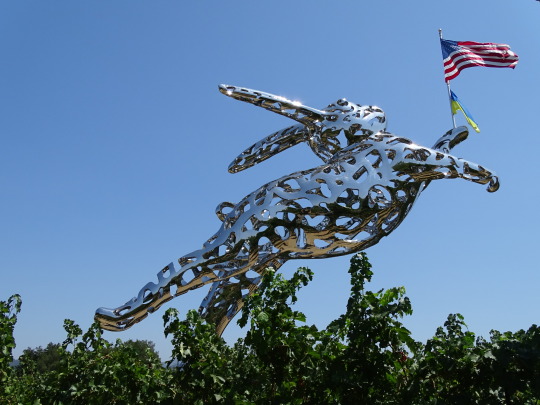
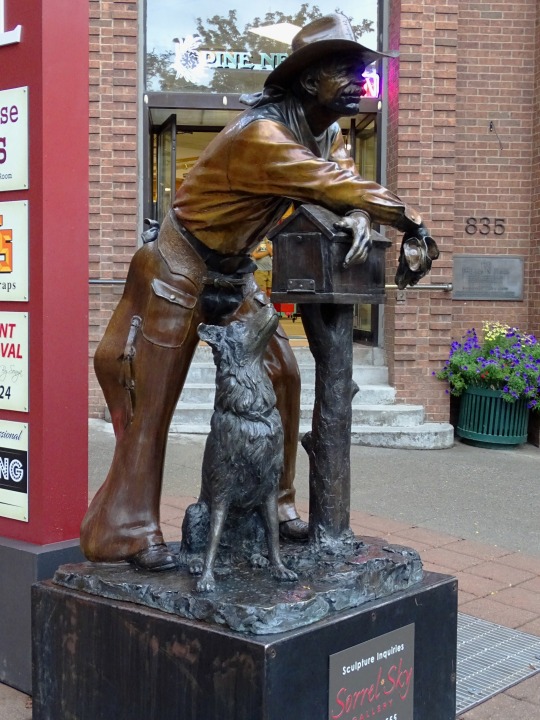



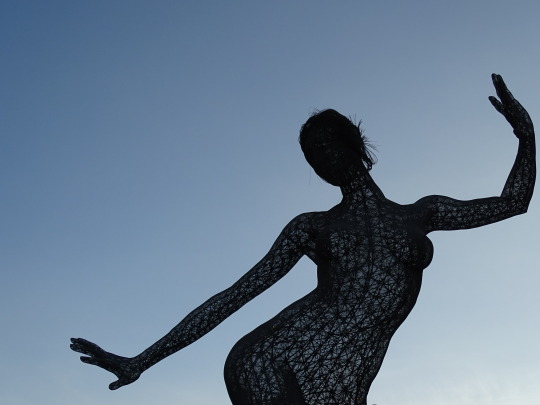


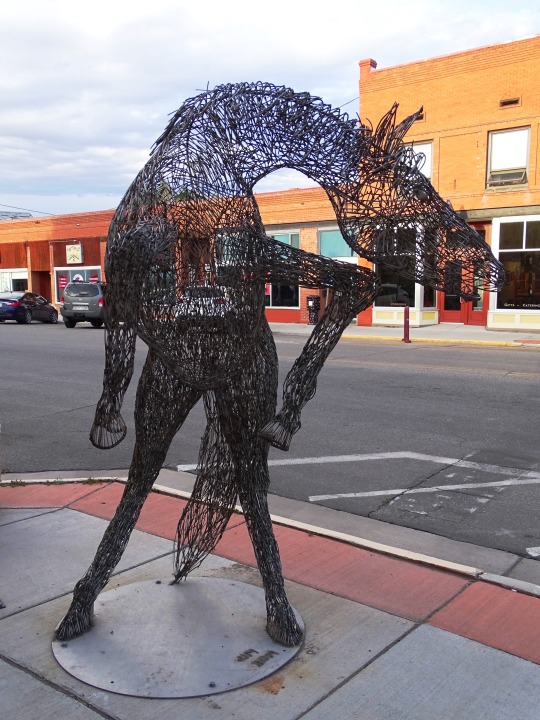
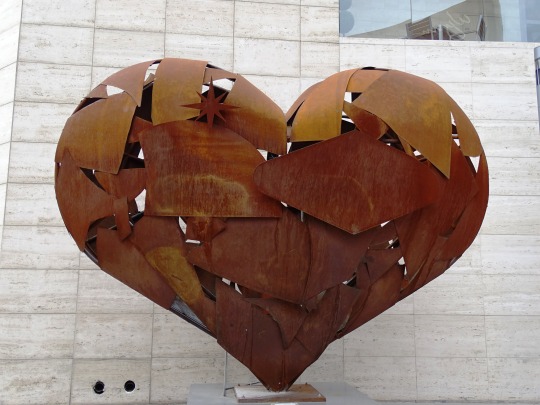
International Sculpture Day
International Sculpture Day is observed on the last Saturday of April every year and this year, it falls on April 29. It is an internationally recognized holiday that commemorates the art of sculpture and sculpted works. Sculptures are a type of visual art that is three-dimensional. Stone sculptures have been proven to last significantly longer than other works of art made of perishable materials, and they account for the vast bulk of all surviving non-pottery art from ancient cultures to this day. Sculptures have always been a major component of religious devotion in many cultures, and enormous sculptures were commonly used to represent religion or politics until recently. The ancient Mediterranean, India, and China, as well as various cultures in Central and South America and Africa, have the most surviving sculptures.
History of International Sculpture Day
The first undisputed sculpture pieces came from the Aurignacian culture in Europe and southwest Asia, which was active at the start of the Upper Paleolithic period. This culture developed well-crafted stone tools, pendants, ivory beads, and other forms of art. They are also attributed to being the first to create cave art and three-dimensional figures.
The Löwenmensch, found in Germany’s Hohenstein-Stadel area, is an anthropomorphic figure carved from mammoth ivory. It is believed to be one of the oldest known uncontested examples of figurative art, standing at 0.9 inches tall. Most prehistoric art that has survived to this day is movable sculptures found throughout central Europe.
The Swimming Reindeer from around 13,000 years ago is one of the greatest Upper Paleolithic Magdalenian bone carvings, however, it is outnumbered by engraved pieces, which are sometimes considered sculptures. The Tuc d’Audoubert caves in France, where a talented sculptor used a spatula-like stone tool and his fingers to build a pair of large bison against a limestone rock tens of thousands of years ago, are home to two of the world’s largest prehistoric sculptures.
Much of the figurative sculpture in Europe at the beginning of the Mesolithic era has been greatly reduced. These sculptures have remained less of a common element in art other than relief decoration of practical objects until the Roman period, despite works such as the Gundestrup cauldron from the European Iron Age and the Bronze Age Trundholm sun chariot.
The Mesopotamian conquest, as well as much of its surrounding territory by the Assyrians, created a larger and wealthier state than was previously usual in the region, with particularly grandiose art in palaces and public places, clearly an attempt to match the glory of the Egyptian empire art. The Assyrians created their sculptures in great numbers using easily carved stones from Northern Iraq.
International Sculpture Day timeline
800—721 B.C The Assyrian Lamassu is Created
The Assyrian gate guardian sculpture, Lamassu, is created.
1513—1515 Michelangelo’s Moses Sculpture is Created
Michelangelo creates the sculpture of Moses sometime during these years.
1793 Crucifixion of Jesus Christ Sculpture is Created
The Spanish sculpture of the Crucifixion of Jesus Christ is made from wood and polychrome.
1998 Angel of the North Sculpture is Created
Sculptor Antony Gormley creates the sculpture of the Angel of the North.
International Sculpture Day FAQs
Which country is famous for sculpture?
The Western sculpture tradition originated in ancient Greece, and the country is well-known for producing great masterpieces during the classical period. During the Middle Ages, Gothic sculpture expressed the Christian faith’s agonies and emotions.
Does the date for International Sculpture Day change?
Yes. The date for International Sculpture Day is the last Saturday of April every year.
Where did sculptures originate?
The earliest sculpture samples belonged to the Aurignacian culture, which was in Europe and southwest Asia and was active at the beginning of the Upper Paleolithic period.
International Sculpture Day Activities
Visit a museum of sculptures
Make your own sculpture
Share on social media
International Sculpture Day is an excellent reason to visit any of the many sculpture museums and historical sites that feature beautiful sculptures. This is also a chance to learn more about the history of sculptures and their sculptors.
You can seize this opportunity and spark your creativity by building your very own sculpture using available and sustainable materials. You can create something meaningful that you can put on display in your home.
Use the hashtag #InternationalSculptureDay to share all of your activities for International Sculpture Day on social media! Take as many pictures as you can and tag your friends!
5 Interesting Facts About Sculptures
Sculpture is three-dimensional
There are various materials for sculpting
Sculptures have cultural and religious origins
There are two major types of sculptures
Stone sculptures are the most durable
A sculpture is a three-dimensional visual art, which makes it all the more “realistic.”
Unlike in the past, when sculpting materials were only limited to stone, bronze, and a few others, modernism has changed the order of things and a variety of materials can be used for sculptures.
Most prehistoric sculptures were born out of a reference to cultural, religious, and political themes.
There are two major types of sculptures which are “statues” and “relief” sculptures.
Most of the prehistoric sculptures and other art forms are stone sculptures.
Why We Love International Sculpture Day
Sculptures tell us stories
Art relaxes the mind
It is food for the soul
Most sculpture works have a story to them; either of religious, cultural, or political origin. International Sculpture Day allows us to learn about the history of sculptures and the artists who created them.
Creating art relaxes the mind. It allows people to showcase their passion by doing something they love.
Ever seen a sculpture or other work of art and felt so… filled? Exactly. Viewing beautiful art pieces is like food for the soul.
Source
#Waiting on an Answer by George Lundeen#Bad Decision by Vic Payne#USA#Bunny Foo Foo by Lawrence Argent#Big Bill Murphy by Adam Skiles#Bliss Dance by Marco Cochrane#Satos Horse by Jim Johnson#Heartfullness Vegas by Katy Boynton#Trouvaille by Kasia Polkowska#Beliers by François-Xavier Lalanne#International Sculpture Day#29 April 2023#last Saturday in April#summer 2022#original photography#public art#travel#vacation
3 notes
·
View notes
Text
"We have made the case that private property first appears as a concept in sacred contexts, as do police functions and powers of command, along with (in later times) a whole panoply of formal democratic procedures, like election and sortition, which were eventually deployed to limit such powers.
Here is where things get complicated. To say that, for most of human history, the ritual year served as a kind of compendium of social possibilities (as it did in the European Middle Ages, for instance, when hierarchical pageants alternated with rambunctious carnivals), doesn't really do the matter justice. This is because festivals are already seen as extraordinary, somewhat unreal, or at the very least as departures from the everyday order. Whereas, in fact, the evidence we have from Paleolithic times onwards suggests that many - perhaps even most - people did not merely imagine or enact different social orders at different times of year, but actually lived in them for extended periods of time. The contrast with our present situation could not be more stark. Nowadays, most of us find it increasingly difficult even to picture what an alternative economic or social order would be like. Our distant ancestors seem, by contrast, to have moved regularly back and forth between them.
If something did go terribly wrong in human history - and given the current state of the world, it's hard to deny something did - then perhaps it began to go wrong precisely when people started losing that freedom to imagine and enact other forms of social existence, to such a degree that some now feel this particular type of freedom hardly even existed, or was barely exercised, for the greater part of human history. Even those few anthropologists, such as Pierre Clastres and later Christopher Boehm, who argue that humans were always able to imagine alternative social possibilities, conclude - rather oddly - that for roughly 95 per cent of our species' history those same humans recoiled in horror from all possible social worlds but one: the small-scale society of equals. Our only dreams were nightmares: terrible visions of hierarchy, domination and the state. In fact, as we've seen, this is clearly not the case.
The example of Eastern Woodlands societies in North America, explored in our last chapter, suggests a more useful way to frame the problem. We might ask why, for example, it proved possible for their ancestors to turn their backs on the legacy of Cahokia, with its overweening lords and priests, and to reorganize themselves into free republics; yet when their French interlocutors effectively tried to follow suit and rid themselves of their own ancient hierarchies, the result seemed so disastrous. No doubt there are quite a number of reasons. But for us, the key point to remember is that we are not talking here about 'freedom' as an abstract ideal or formal principle (as in 'Liberty, Equality and Fraternity!'). Over the course of these chapters we have instead talked about basic forms of social liberty which one might actually put into practice: (1) the freedom to move away or relocate from one's surroundings; (2) the freedom to ignore or disobey commands issued by others; and (3) the freedom to shape entirely new social realities, or shift back and forth between different ones.
What we can now see is that the first two freedoms - to relocate, and to disobey commands - often acted as a kind of scaffolding for the third, more creative one. Let us clarify some of the ways in which this 'propping-up' of the third freedom actually worked. As long as the first two freedoms were taken for granted, as they were in many North American societies when Europeans first encountered them, the only kings that could exist were always, in the last resort, play kings. If they overstepped the line, their erstwhile subjects could always ignore them or move someplace else. The same would go for any other hierarchy of offices or system of authority. Similarly, a police force that operated for only three months of the year, and whose membership rotated annually, was in a certain sense a play police force - which makes it slightly less bizarre that their members were sometimes recruited directly from the ranks of ritual clowns.
It's clear that something about human societies really has changed here, and quite profoundly. The three basic freedoms have gradually receded, to the point where a majority of people living today can barely comprehend what it might be like to live in a social order based on them.
[...]
It seems to us that [the] connection - or better perhaps, confusion - between care and domination is utterly critical to the larger question of how we lost the ability freely to recreate ourselves by recreating our relations with one another. It is critical, that is, to understanding how we got stuck, and why these days we can hardly envisage our own past or future as anything other than a transition from smaller to larger cages."
-- The Dawn of Everything by David Graeber and David Wengrow
3 notes
·
View notes
Text

12/6/23
Pictured: a sketchy lil map I made for my class with the major Bronze Age Civilizations designated
Today I:
-spent the entire fucking day synthesizing prehistory from the Paleolithic Period --> the Bronze Age Collapse in the Middle East and Eastern Mediterranean. This is not my area of expertise, and in fact covers like 5 different distinct fields of study that I am not presently getting a PhD in. But I think my lecture is super solid and much better than the examples I was working off
-didn’t have to do anything for dinner, E took care of it entirely
-am going to wind down reading a wesper fic Jamila recced me!
#personal#sports#good things#i really fucking hope this was the hardest content lecture of the semester#summer term#whatever#this kicked my ass today#but I feel really good about what I made
6 notes
·
View notes